The Best Little Ski Areas You’ve Never Skied
Head to one of Vermont’s remaining nonprofit, community-run ski areas and you’ll find cheap lift tickets, few lines and the soul of skiing.
At Northeast Slopes, set on the hardscrabble side of a hill farm in East Corinth, not much has changed since the ski area was founded by neighbors in 1937. A 1973 Dodge Dart still powers the rope tow, and like many ski areas of its size across the state, the ski area is a self-funded nonprofit organization run entirely by local volunteers.
Tickets are priced to make skiing on a whim feasible—a family of five can ski for the price of a one-day adult lift ticket at Okemo or Stowe. And, as a result, all the locals do ski. “There’s a vibrancy here that’s real,” says Wade Pierson, who leads Northeast Slopes. “Skiing is who we are, all of us.”
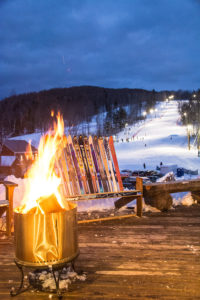
At places like this around Vermont, you will hardly ever wait in line. Powder day mornings are devoid of competition—locals know there’s plenty to go around and besides, they’d rather
share it. Flannel shirts and Carhartts abound and you never know when you might be watching a future Olympian cut their teeth. Take the Cochran family—their Richmond ski hill has produced 11 U.S. Ski Team members.
As legendary extreme skier Glen Plake said following his whirlwind Down Home tour of Vermont last January, “It’s places like Northeast Slopes that still have the soul of skiing in them.”
Over the years, Vermont has seen 119 ski areas come and go—no small feat for a little state with 251 towns. Like a town playground, many were owned by the nearby villages, run by volunteers and powered by a single rope tow or two.
Today, as resort after resort has fallen under corporate ownership (Sugarbush’s November sale to Alterra is the most recent example of this), just 10 of Vermont’s 20 ski areas remain independently owned and operated.
Six of them operate as community-run non-profits—think community-supported skiing, or a “CSS” instead of a CSA farm share. Some, like Ascutney, Hard’Ack and Mad River Glen are actually growing, adding or improving lifts and base lodges.
And while famous terrain like Stratton’s groomers, Killington’s bump runs and Stowe’s Front Four will always hold a certain magic, so do fresh tracks on these hills.
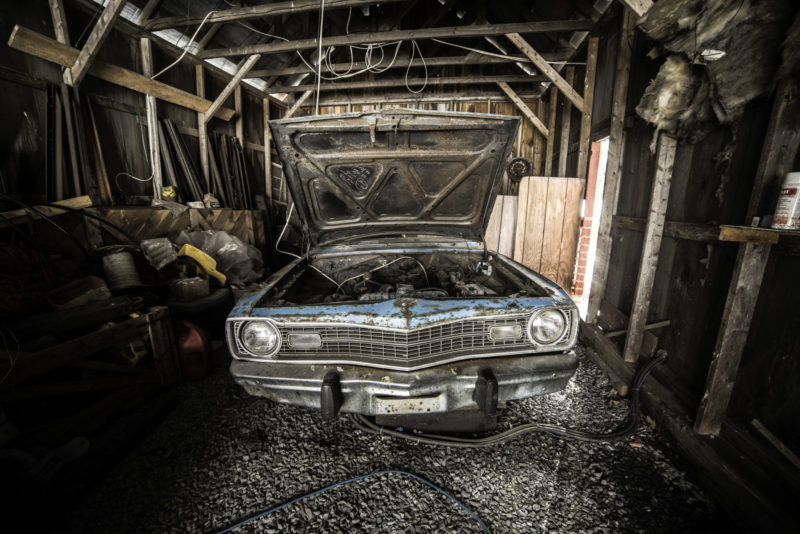
Ascutney: A Backcountry Powder Heaven
At 3,130 feet high, Mount Ascutney looms over the Connecticut River Valley. At its foot lie the remains of what was once a 469-acre ski resort with a base lodge, lifts, condos and groomed trails.
When the ski area closed in 2010, locals weren’t ready to give up on their home mountain without a fight. Though all of the lifts were subsequently sold and the original base lodge burned in 2015, the legendary trails cut into the monadnock—a geologic term for a stand-alone mountain—remained. In a storyline that parallels How the Grinch Stole Christmas, the people of Windsor County gathered and decided they wanted their ski hill back.
“We saw that this was something important, that it needed to be done and so we did it,” says Steve Crihfield, president and founding member of the nonprofit Ascutney Outdoors.
Over the last nine years, Ascutney Outdoors has rallied local volunteers to meticulously preserve the iconic, steep and winding trails (think a smaller version of Magic Mountain or Mad River Glen) and more than 50 acres of hardwood and spruce glades for backcountry touring. It’s a place where you can still find untracked lines on a Saturday afternoon.
In 2015, the non-profit also installed an 800-foot, lighted rope tow and tubing hill. And after the snow melts, 42 miles of mountain biking and hiking trails reveal themselves, zig-zagging over the slopes and through the surrounding forest—thanks to hard work by local Vermont Mountain Bike Association chapter Sports Trails of the Ascutney Basin.
Over nine years, locals raised $1.5 million to build, among other things, the Ascutney Outdoors Center in 2018. The lodge has since been home to some of the biggest trail events in the state, among them the Vermont 50, a 50-mile trail ultramarathon and mountain bike race, and the Point-to-Point centure ride.
This season, a Dopplemayer T-bar will restore lift service to ten trails on the lower mountain—offering skiers a serious boost to the upper mountain’s most challenging terrain.
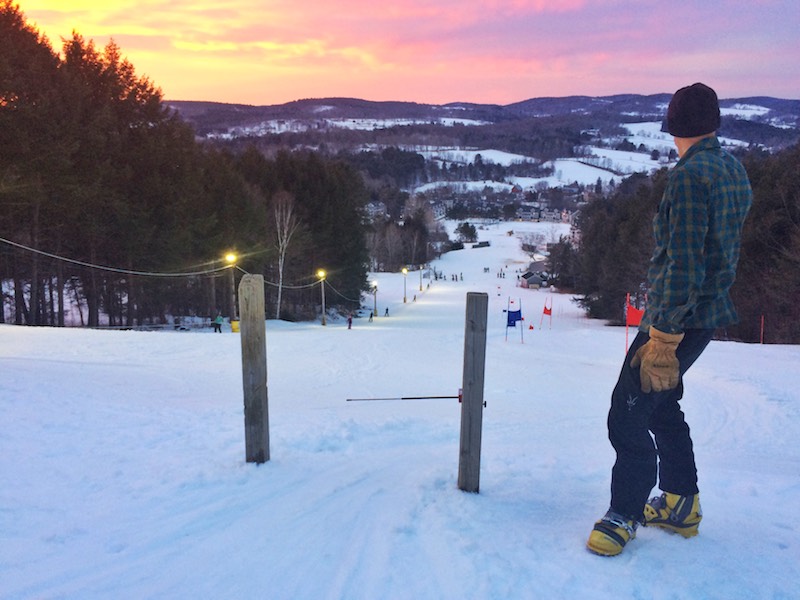
Best For: Introductory to advanced backcountry touring. Stats: 469 skiable acres; one rope tow and one T-bar, 1,460 feet of vertical drop. AprÈs Ski: Head to the Brownsville Butcher and Pantry or Harpoon Brewery. Signs of Soul: Thursday night citizen’s slalom racing under the lights of the rope tow, where about half the racers telemark. Wild & Wacky Events: Jan. 18: Grand opening of the new T-bar, with a chili cook-off at the base lodge. Details: Thurs.5:30-8:30 p.m.; Fri. 6-8 p.m.; Sat. & Sun. 12-4 p.m. Day tickets: $15, ascutneyoutdoors.org
Brattleboro Ski Hill: The Place to Learn
Hidden at the heart of one of southern Vermont’s busiest towns, the Brattleboro Ski Hill at Memorial Living Park is a great place to stop for night skiing on your way north on I-91.
With a 230-foot-wide slope, about three times as wide as the average New England ski trail, it is quite possibly “the best place to learn how to ski in the state,” says Spencer Crispe, a local lawyer who rose to fame as “That Guy” in Ski Vermont’s video series about skier etiquette a few years back. He and his siblings are the third generation of Crispes to learn to ski at Brattleboro. “The slope is so wide you can cruise across, making super wide arcs as you go and learning to engage your edges without the fear of falling,” he says.
At the base, a tiny wooden snack bar serves hot cocoa as instructors from Mount Snow offer free ski and ride lessons to local kids on Thursday nights. Half of the slope is designated for sledding, and half for skiing. Despite having just one trail, the grooming and snowmaking is top-notch, thanks to volunteer hours put in by the nonprofit that operates it, Living Memorial Park Snowsports, Inc.
“I remember getting on the T-bar with a shovel and building these obscenely large jumps,” says Crispe. “Like you believed you were getting sent into the stratosphere after sending it off of one of these features. That spirit’s still alive and well.”
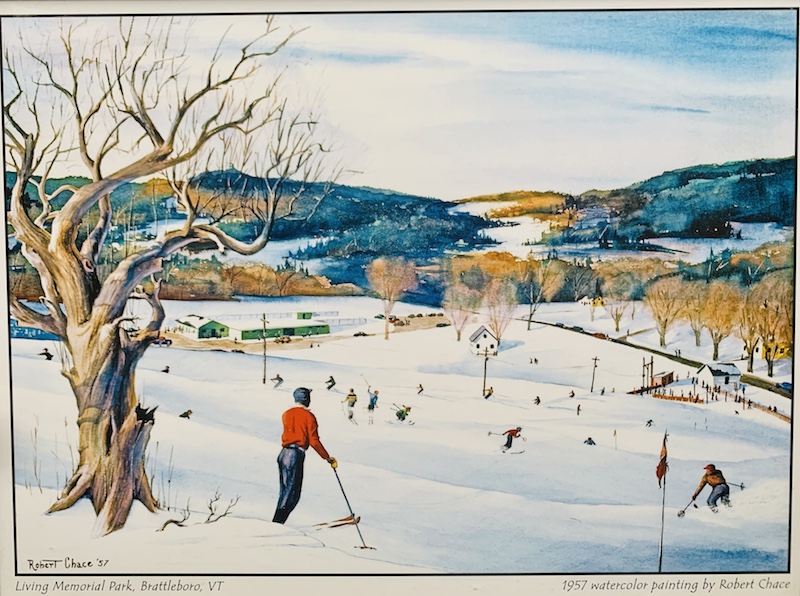
Best For: Learning to ski; grabbing some night turns on your Friday night drive north. Stats: 2 skiable acres; 204 feet vertical drop; one rope tow and one T-bar. AprÈs Ski: Go for a home brew at The Whetstone. Signs of Soul: People in brightly colored onesies sending it off of massive jumps. Wild & Wacky Events: Feb. 17: Community ski races at the Brattleboro Winter Carnival; March 7: March Madness, a themed costume party on the slopes with a bonfire and costume contest. details: Fri. 4-9 p.m.; Sat. 10 a.m. to 9 p.m.; Sun. 12-4 p.m. Tickets: $ 5. vtsnowsports.org
Cochran’s Ski Area: An Olympic Pipeline
On any given day at Cochran’s Ski Area in Richmond, Marilyn Cochran Brown can be found helping tots of all ages dismount from the T-bar. At 69, the three-time Olympic ski racer is one of 11 Cochrans to have made the U.S. Ski Team since her parents Ginny and Mickey installed a rope tow in their backyard in 1961 and set up their tiny Richmond ski hill.
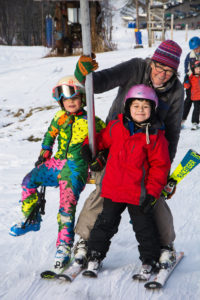
Today, Marilyn’s sister, Olympic gold medalist Barbara Ann Cochran, runs the nonprofit mountain’s famed Ski Tots program, where she teaches kids 3 to 5 how to ski “The Cochran
Way” while dishing out coaching pointers for their parents. The ski area hosts local high school race teams and hundreds of kids learn to ski and ride there each season, fulfilling the slogan: “No child will be denied the opportunity to ski or ride.”
You might also see former University of Vermont ski team coach and U.S. National Team member Tim Cochran flash by, or his cousin Robby Kelley—two who helped form a renegade World Cup training team, The Redneck Racers.
And come spring, cousins, friends and extended family can be found boiling down the sap that flows from slopeside maples into Slopeside Maple Syrup—some of which is also used in another venture with partial Cochran ownership: UnTapped maple syrup energy packets.
At the adorable vintage base lodge, Olympian and general manager Jimmy Cochran may serve you one of the famous $5 grilled cheese sandwiches for lunch. Consider staying for the Friday night family-style meal and $5 night skiing. Dinner costs just $6 for kids and $12 for adults and the room is packed each week with kids and parents, all sitting at long tables, eating homemade spaghetti in front of the slope-facing windows.
Look up and you’ll see the walls lined with the Olympic jerseys of skiers who honed their craft on this same hill.
Best For: Learning to ski gates with (and then getting served grilled cheese by) a three-time Olympic medalist. Stats: 8 trails; 350 feet of vertical drop; two rope tows and a T-bar. AprÈs
Ski: Friday night family-style dinner at long tables in the base lodge. Signs of Soul: The U.S. Ski Team members who come home during the holidays to telemark in their jeans. In the spring, former U.S. Ski Team member Roger Brown and brother Doug can be found sugaring next to the slopes. Wild & Wacky Events: March 13: Rope-a-thon a vertical challenge to race up and down the slope; April 5: Nordic Cross, a Nordic ski cross race involving downhill slalom gates, a pond skim and wild costumes plus a pancake breakfast with syrup made onsite. Details: Tues.-Thurs 3-6 p.m.; Fri. 3-8 p.m.; Sat-Sun 9 a.m. to 4 p.m.Tickets: $19; $5 night skiing. cochranskiarea.com
Hard’ack: The Urban Park
While skiing at Hard’Ack is a throwback to the days of town-run ski hills, the little hill is also looking to the future, thanks to the new Greg Brown Lodge that’s slated to open in early February. Located on Aldis Hill in downtown St. Albans, the ski area has offered night skiing as a community tradition for as long as recreation director Kelly Viens can remember.
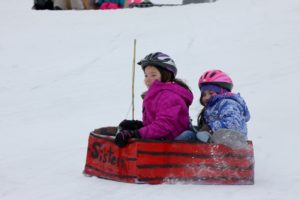
What started as a renegade effort by locals to ski through the night with flashlights nearly 50 years ago has evolved into a well-lit community gathering each Friday through Sunday, with two trails open and about 700 vertical feet of lit skiing and snowmaking.
Thanks to donations from Jay Peak and Smugglers’ Notch, it’s also home to a terrain park that features a rotating cast of rails and boxes and jumps. “We get folks who come up from Burlington to play around because it’s such a unique setting,” says Viens. It’s a family-friendly scene with some serious shredders of all ages.
The ski area has been around since the 1950s but was recently bought by the City of St. Albans, making it Vermont’s only remaining town-owned (but all-volunteer-run) ski hill. With 4k of groomed Nordic ski trails, it also sits adjacent to about six miles of snowshoe trails which move through birch and maple glades on the back side of Aldis Hill.
“On snow days, I can remember taking the rope tow to the top and riding down the trails on the back side all the way down Congress street and into town,” says Viens.
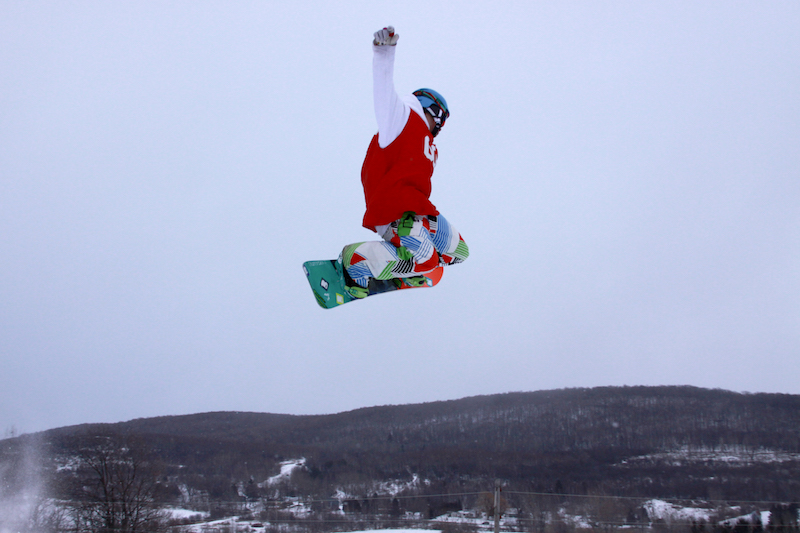
Best For: Urban park skiing in a fun, low-key setting. Stats: 2 skiable acres; 100 feet vertical drop; one rope tow and one T-bar. AprÈs Ski: A local draft at 14th Star Brewing Company in St. Albans. Signs of Soul Local kids who ride and ski hard at the tiny terrain park after school. Wild & Wacky Events: Feb. 16: Winter Carnival and Duct Tape Derby, where contestants build sleds using only duct tape and cardboard boxes and race them down the face to live music. Details: Fri. 5-8 p.m.; Sat. 12-7 p.m.; Sun. 12-5 p.m. School vacation 2-7 p.m. Day tickets: Suggested $10 donation. stalbansvt.myrec.com
Lyndon Outing Club: The Original Volunteer Operation
Head to the Northeast Kingdom’s Lyndon Outing Club on a Friday night in midwinter and you’ll be guaranteed to find just about everyone in the surrounding towns night skiing or huddled around a warm fire in the stone fireplace at the center of the original 1930s base lodge.
The Lyndon Outing Club has been entirely volunteer-operated since its founding in 1937. “Even the lodge was built by local volunteers,” says Sue Russell, who served as the 32-acre, self-funded, nonprofit ski area’s board president for ten years. She notes, too, that “We use the trees we clear off the trails for firewood.”
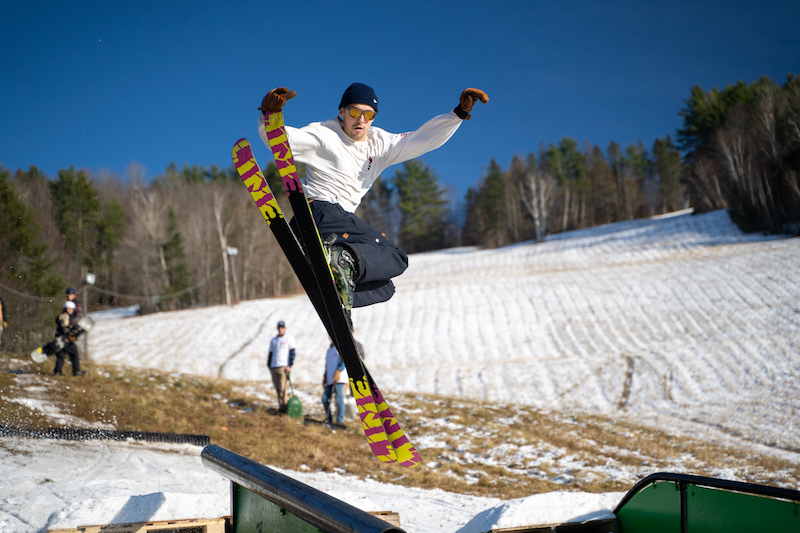
The ski area has surprisingly steep terrain for a place with nine trails and 433 feet of elevation and sits on 32 skiable acres at Shonya Hill Park. It’s all overseen by the Lyndon Outing Club—and, thanks to a $2,500 grant from Kingdom Trails, the club expects to break ground on new mountain bike trails this spring.
“It’s familial,” says Russell, whose grandchildren are the fifth generation to learn to ski at Lyndon. She doesn’t ski but mows the trails with her tractor each summer and fall. “You have that feeling here even when you come from far away. It’s the sort of place where you can drop your kids off and know that somebody is going to keep an eye on them.” Ski for the evening and be sure to check out “Zitz Mark,” a steep double black diamond with teeth.
Best For: Night skiing; oldest continuously volunteer-run ski area in Vermont. Stats: 433 vertical feet; one T-bar and two rope tows; AprÈs Ski: The French fries and $3 hand-shaped burger in the base lodge, or whatever spontaneous meal has been dreamed up by the volunteer running the kitchen, often with local produce. Signs of Soul: The tradition of jumping through the “O” in the giant, plywood “L.O.C” letters wrapped in Christmas lights; the T-bar, which runs off of an old tractor motor. Wild & Wacky Events: The End-of-Season Torchlight Parade, in which volunteers ski down with real torches—as opposed to lights. Nov. 9: 12th Annual Rail Jam and Chili Cook-Off Details: Sat. 12-4 p.m. and 6-9 p.m.; Sun. 12-4 p.m.; Wed. and Fri. 6-9 p.m. Day tickets: $15; kids: $10. skilyndon.com
Mad River Glen: The Co-Op
Set on 3,200-foot General Stark Mountain, above the Mad River Valley, Mad River Glen is where big mountain terrain meets small mountain community and spirit.
According to Ry Young, whose grandfather was an early member of the Amateur Ski Club of New York which helped launch Mad River in the 1950s, there are some clear reasons for that.
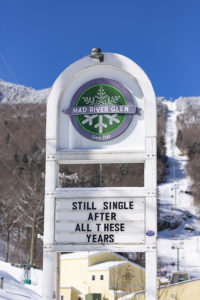
First, the skiers literally own the mountain-—it’s been a cooperative since 1995. Second, “Back in the day when our trails were built, the prevailing style was narrow and winding, with a surface and fall line that mirrors the underlying terrain,” says Young, whose daughter will soon be a fourth generation Mad River skier. “Trails were cut in a certain way, so that skiers could play with the natural gravity of the mountain.”
At Mad River Glen, there is no snowmaking above 2,300 feet. The most iconic lines remain on natural snow, and the only way to get to them is via the mountain’s legendary Single Chair. “Skiing here is still very much raw,” says Young. “When you get up there on top of the mountain, you’re essentially by yourself, thanks to our low uphill capacity, and that is something increasingly rare.” It’s truly a skiers’ mountain: Mad River remains one of the few mountains in America where snowboarders are not allowed on the lifts.
As the only cooperative-owned ski area in the United States, Mad River Glen was curating its more than 800 acres of sustainably cut ski glades before tree skiing was cool. “I hate the ski industry,” said Betsy Pratt, the legendary owner of 20 years who ultimately sold the resort back to skiers in 1995, in a 1989 article in The New York Times. “I’m not a member of the ski industry, I’m the steward of a mountain.”
According to Young, that spirit is alive and well. “We manage for viability, not for profit. You feel that in the solidarity of the community here,” he says. In 2007, skiers raised $1.8 million to replace the old single chair, which had run since the mountain was founded in 1948, with a new single lift. Coop shareholders never even considered putting in a high-speed quad.
Last year, as the ski area celebrated its 70th birthday, the General Stark Pub was named the seventh-best après-ski bar in America in a USA Today Reader’s poll. Its walls are plastered with photos of people who have tagged Mad River Glen’s famous “Ski it if You Can” bumper stickers in outrageous locations (like the International Space Station) and the Pub’s burger is made from local grass-fed beef.
Best For: Small mountain vibes with big mountain terrain and some of the most challenging trails and glade skiing in the nation. Stats: 53 trails; 115 acres of mapped terrain; 800 acres of tree skiing; five chairlifts Apres Ski: The Cruncher, a grilled cheese sandwich with cheese on both sides, served at the mid-mountain café, the Birdcage. Signs of Soul: The often-humorous signboard. Sean Lawson (the brewer behind Lawson’s Finest), still hosts moonlight snowshoe naturalist tours and there’s even a mid-mountain nature center. Wild
& Wacky Events: Jan. 28: Roll Back the Clock, with $3.50 lift tickets for MRG’s birthday; March 21: The Triple Crown, an all-out, three-part competition for best skier on the mountain that features a vertical challenge, a big mountain competition and a mogul race. Details:
Sat. & Sun. 8:30 a.m. to 4 p.m., Mon.-Fri. 9 a.m. to 4 p.m. Day ticket: $74-$92. madriverglen.com
Northeast Slopes: Keeping it Real Since 1936
Show up to Northeast Slopes on a Saturday powder day and you will feel like you’re part of something special.
“We basically have a Google spreadsheet that we all pass around to see who’s going to flip the burgers and run the rope tows or teach our kids to ski each week,” says Northeast Slopes Coordinator Wade Pierson of the tiny, volunteer-run ski area. One of those rope tows is still
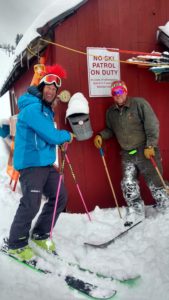
run off of the engine of a Dodge Dart, housed in a red barn that was salvaged from the set of the 1980s cult film Beetlejuice.
Each winter, the ski area outfits, transports and instructs more than 50 local students at no cost with funds raised at NESfest, an annual music festival that draws upwards of 700 people each fall. The result? Everybody—from farmers to teachers to auto mechanics—in the surrounding communities of Bradford, Waits River and Corinth skis. And they help make it happen for their neighbors.
From spontaneous late-night, moonlit rope tows to annual traditions like the Box Race, where kids and adults build sleds and race them down the Main Slope (a blue square) to the base lodge, Northeast Slop es is a place full of soul with some surprisingly good terrain.
Ski the face for steep turns or follow some middle schoolers into some beautiful glades. Best of all? “There is never a line. And when the manmade snow elsewhere gets rained on, our natural snow drains and re-grooms beautifully into something soft and always carveable,” says Pierson, who, at 56, swears that his day job managing school busing does not present a conflict of interest with his audible delight over orchestrating an unplanned opening on a midweek powder day.
Best For: Home to the oldest continuously-operating rope tow in the U.S. (and, the ski area claims, the fastest). Stats: 12 trails; 35 skiable acres, 360 feet of vertical drop, one T-Bar and two rope tows. Apres Ski: The Nor’easter Burger, grilled to order with grassfed beef raised in the Waits River Valley, caramelized onions and melted Cabot cheddar served on a freshly-baked roll from Colatina Bakery in Bradford. Signs of Soul: Spontaneous full moon night skiing under portable construction lights, announced as weather permits on the Facebook page. Wild & Wacky Events: Winterfest and the Uphill Downhill Race (slalom downhill, ride the rope tow to the top, then downhill straight to the base: Feb. 15; Box Race: Feb. 23 Details: Day Ticket: $10-$15 northeastslopes.org
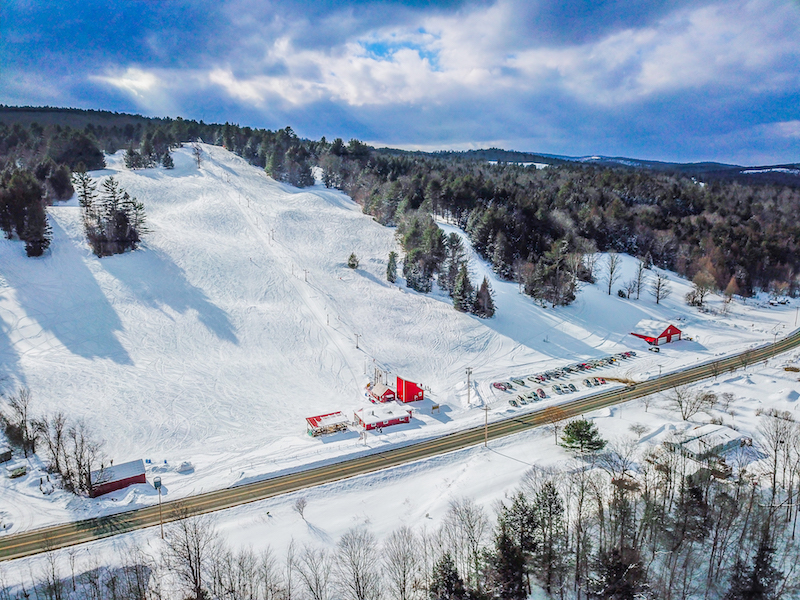
Featured Photo: On moonlit nights the locals sometimes rev up the T-bar at Northeast Slopes for impromptu night skiing. Photo by Brian Carroll.

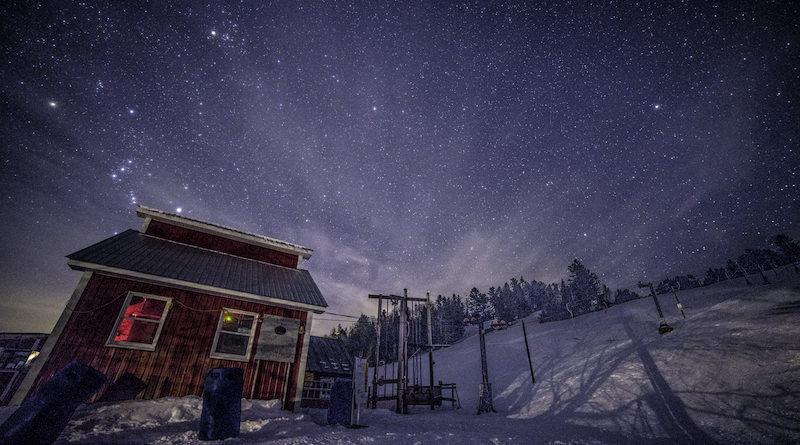
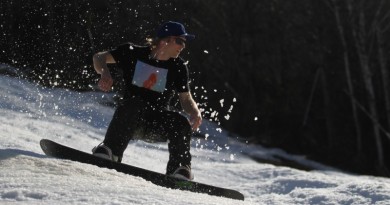
Northeast slopes ! Hey ! That`s my old Dodge dart running the kiddies tow ! I wondered where it went to ! LOL